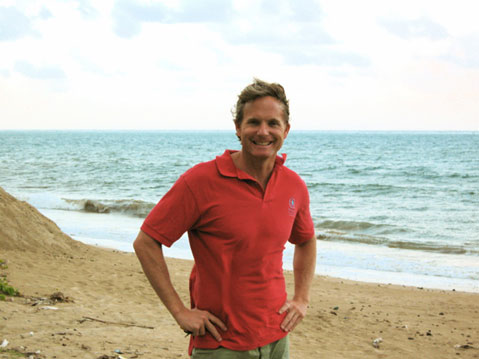Food for Thought
No Take Zone Off of Carpinteria?

I ran into a friend the other day at an afternoon party. He works for a national marine conservation group—we’ve known one another for 10 years or more. I was excited to tell him about all the fish I had been catching from my kayak at a secret spot off Carpinteria’s beach. As I went on about the diversity of fish we had been catching—sand bass, calicos, halibut, white sea bass, even black sea bass—it was evident by the look in my friend’s face that he was not as excited by my successes as I was. “That’s great, Michael. Exactly what I want to hear right now,” he mused sarcastically.
See, my friend also has been an instrumental player in negotiating Marine Protected Areas along the south coast. As a dedicated and employed marine conservationist, he has sought the greatest coverage of MPAs possible. He believes, correctly, that these areas are our last best hope to recover the bounty that once filled the sea. During the MPA process around the Channel Islands that proved so contentious—polarizing fishermen and scientists—I joined my friend and the rest of the “blue shirts” and vocally spoke out in favor of the MPA coverage recommended by scientists for the Channel Islands.
Now we face an identical process to determine areas of the coast that will be set aside as “no take zones”—no fishing. Period.
As it turns out, the healthy kelp forest thriving off of my hometown—Carpinteria—is, along with Naples Reef, recognized as a key source of diversity and abundance that will serve to repopulate surrounding areas if left alone.
I enjoy eating fish very much. I have the Seafood Guide app on my iPhone. I know what fish are considered “sustainably harvested” and those that are not. From this list, Trader Joe’s stocks wild salmon from Alaska and mahi mahi fillets from Hawaii, both considered “safe” by just about every seafood guide.
But here is my issue that centers on the MPAs proposed by my friend: the method of commercial fishing (long line or purse seine) for the fish I buy at Trader Joe’s likely includes bycatch and is fossil-fuel dependent. I consider the fuel it takes to freeze, refrigerate, and transport the mahi from Hawaii or salmon from Alaska.
And then I look at my own fishing. I bike my kayak and fishing gear to the beach using a simple, aluminum trailer. I paddle out into the kelp forest and I catch fish, abiding by prescribed “catch limits” and never taking more than I can eat and possibly share with a friend or neighbor. I do not seek to stock my freezer for the winter, but merely to eat fresh fish from the beach I call home.
I believe the Marine Life Protection Act is important legislation and I support implementation of Marine Protected Areas. But we must be more nuanced in our definition of “use”, perhaps allowing for “fossil free” take from the MPAs, allowing freedivers, kayak fishers, and float tubers to continue their limited take on the coast. It does not take a scientist to tell me that my low impact methods of getting a meal are more sustainable than the Trader Joe’s fish. In the same way we are encouraging people to start their own gardens, I think we should encourage fossil free, “subsistence take” of fish and shellfish from our coastal waters.
Michael Hanrahan is CEO and co-founder of The Ocean Channel, which is focused on the production and distribution of ocean content for internet audiences.



